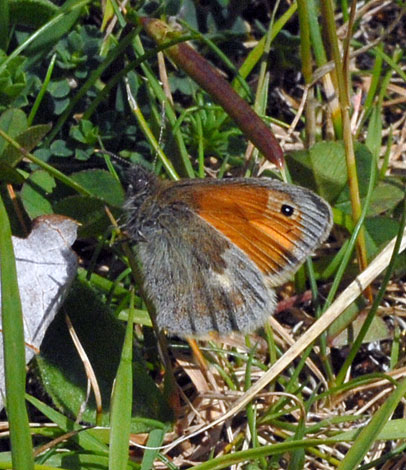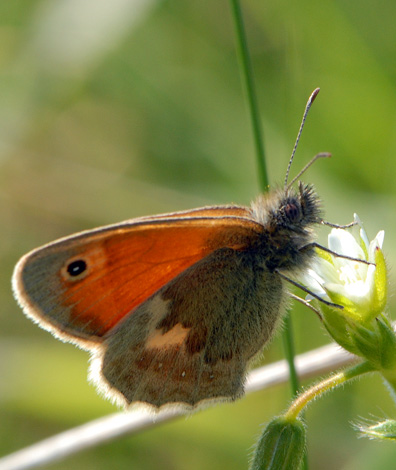Small Heath Coenonympha pamphilus ssp pamphilus


The Small Heath is rarely seen with open wings but close-up photos of the undersides show what a particularly hairy insect this is. This butterfly is still reasonably common in the UK and there are at least two sub species one of which is the even hairier Hebridean Small Heath (Coenonympha pamphilus ssp rhoumenensis). A double brooded species, it can be seen from April in Spring until early Autumn.
The Small Heath prefers well drained habitat so coastal dunes with flowers are perfect and as well as perching in grasses, it takes nectar from flowers occasionally too. The expanded photo shows one nectaring on Cerastium fontanum (Common Mouse-ear).
Males like to have a higher perch on a bush in the open where they can watch for passing females. The larval food plants are usually grasses including the very common Poa annua (Annual Meadow-grass), Agrostis species (Bents) in high summer and on higher pastures Festuca ovina (Sheep's-fescue).
LHS: Grassland near old Colwyn 1st July 2008 RHS: Red Rocks dunes, 15th June 2010
Added on 16th July 2008, updated November 6th 2008, updated 7th June 2010 and 15th June 2010, updated 9th Dec 14





